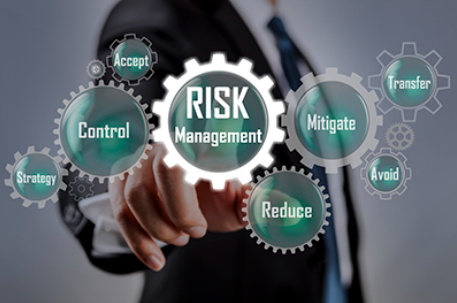
Introduction
Risk is an inherent part of life, be it in personal endeavors or business operations. In this dynamic and unpredictable world, insurance and risk management are indispensable tools that provide a safety net against unexpected events and their potential financial consequences. This comprehensive exploration delves into the vital role of insurance and risk management, emphasizing their joint mission of mitigating risks and reducing losses for individuals and organizations alike.
1. The Nature of Risk
We begin by defining and understanding risk, which can take various forms, including financial, operational, and natural or human-made disasters. By grasping the nature of risk, we lay the foundation for effective risk management and insurance strategies.
2. Risk Management Strategies
An effective risk management strategy is essential for businesses and individuals. We will delve into the methods and principles of risk management, from risk identification and assessment to risk avoidance, transfer, and mitigation.
3. The Role of Insurance in Risk Management
Insurance is a linchpin of risk management, offering a financial safety net when things go awry. We will explore the role of insurance in risk management, including how insurance policies work, the concept of premiums, and the claims process.
4. Types of Insurance Coverage
There is a plethora of insurance coverage options, each catering to specific risks. We will discuss the various types of insurance, including health, property, casualty, liability, and life insurance, helping individuals and organizations understand which policies are relevant to their unique needs.
5. Risk Mitigation and Loss Prevention
Preventing risk is just as crucial as managing it. We will focus on risk mitigation and loss prevention strategies, such as workplace safety protocols, health and wellness programs, and disaster preparedness, highlighting the ways proactive measures can minimize the need for insurance claims.
6. Business Continuity and Disaster Recovery
In the business world, continuity planning and disaster recovery are essential. We will discuss how businesses can create plans to ensure operations continue in the face of disruption, reducing financial losses and protecting their reputation.
7. Regulatory Compliance and Insurance
Compliance with regulations is vital for both risk management and insurance. We will explore how various industries are subject to regulatory requirements that influence their risk management practices and insurance needs.
8. The Role of Technology in Risk Management and Insurance
Innovations in technology are reshaping risk management and insurance practices. We will discuss how data analytics, AI, and automation are enhancing risk assessment, fraud detection, and claims processing.
9. Cyber Insurance and the Digital Age
The digital age has ushered in new risks, particularly in the realm of cybersecurity. We will focus on cyber insurance, which helps individuals and businesses protect themselves from digital threats, data breaches, and cyberattacks.
10. The Future of Risk Management and Insurance
The future of risk management and insurance is marked by continuous evolution and adaptation. We will explore emerging trends, including the incorporation of ESG (Environmental, Social, and Governance) criteria in risk assessment and insurance, and the potential role of blockchain technology in enhancing transparency and efficiency in the insurance industry.
Conclusion
Insurance and risk management are inseparable allies in navigating an uncertain world. By understanding the nature of risk, implementing effective risk management strategies, and utilizing insurance as a protective shield, individuals and organizations can mitigate risks and reduce losses. In an era defined by change and unpredictability, insurance and risk management provide the assurance that unexpected events need not result in financial ruin, fostering resilience and peace of mind in both personal and professional spheres.